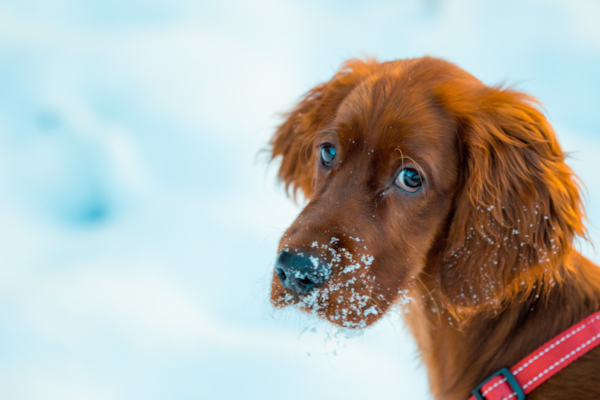
Winter can be a challenging time for dog owners, as the cold weather can pose a variety of risks to your furry friend's health and well-being. From dry, cracked paws to frostbite and dehydration, it's important to take extra precautions to ensure that your dog stays happy and healthy during the colder months.
In this article, we'll provide 10 winter care tips for dog owners to help you keep your dog safe and comfortable during the winter season. From protecting their paws to keeping them active and hydrated, these tips will help you ensure that your dog stays healthy and happy all winter long.
Table of Contents
1. Keep Them Warm

As the temperatures drop during the winter months, it's important to make sure your dog stays warm and comfortable. Cold temperatures can be uncomfortable and potentially dangerous for dogs, especially those with short coats or those that are small in size. They may become chilled more quickly than dogs with thicker coats and may require extra protection to stay warm and comfortable.
In addition to being uncomfortable, cold temperatures can also have a number of negative effects on your dog's health. Cold temperatures can cause a dog's skin to dry out and become cracked, which can be painful and lead to other health issues.
Dogs need extra protection from the cold. Make sure they have a warm place to sleep, such as a crate or dog bed with a warm blanket or dog-safe heating pad. It’s also important to consider their needs for outdoor walks. If your dog has a short coat, consider using a dog coat or sweater to help keep them warm when they are outside.
RELATED: Your Puppy's First Christmas
2. Protect Their Paws

It's important to protect a dog's paws during the winter months to keep them comfortable and prevent potential health issues. Cold temperatures, ice, snow, and salt can be harsh on a dog's paws and can cause dryness, cracking, and even burns.
Cold temperatures and ice can cause a dog's paws to become dry and cracked, which can be uncomfortable and even painful. Snow and salt can be harsh on a dog's paws and can cause burns if the dog walks on them for an extended period of time.
Here are a few things you can do to protect your dog’s paws during winter:
- Use dog booties: Dog booties can provide an extra layer of protection for your dog's paws and help prevent them from becoming dry or cracked.
- Apply paw wax: Paw wax is a protective balm that can be applied to a dog's paws to help prevent dryness and cracking.
- Wipe their paws after a walk: After a walk, use a warm, damp cloth to wipe your dog's paws to remove any ice, snow, or salt that may be stuck to their paws.
- Trim their nails: Keeping your dog's nails trimmed can help prevent their paws from cracking and splitting.
3. Keep Them Hydrated
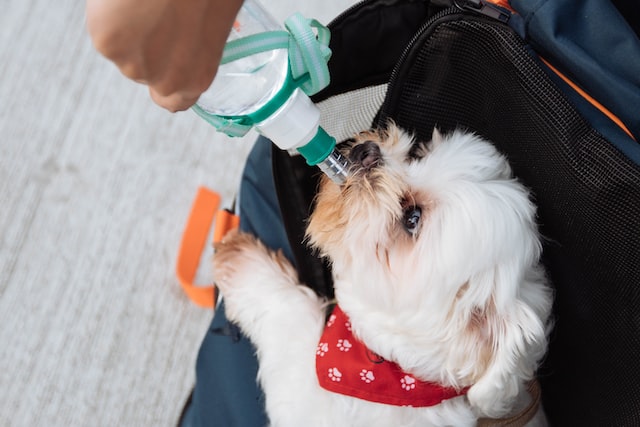
Cold weather can cause your dog to drink less water, so be sure to check their water bowl often and refill it as needed. It may also be necessary to encourage your furry friend to drink more water during the winter.
4. Watch For Frostbite
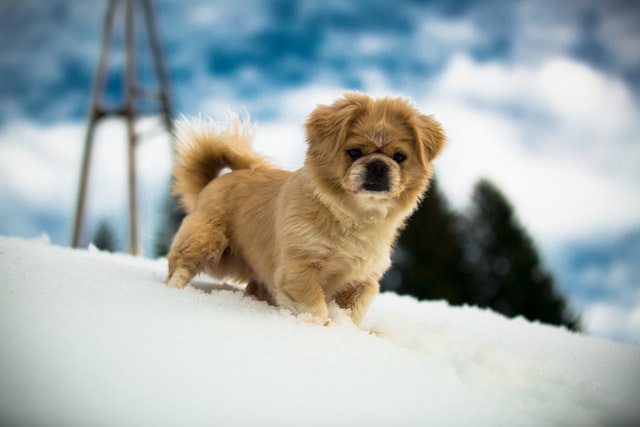
Dogs are more susceptible to frostbite, especially on their ears, tail, and paws. If you notice any signs of frostbite, such as pale or gray skin, bring your dog inside and warm them up slowly. You can also opt for dog clothing or accessories that cover your dog’s ears, paws, and tail.
5. Keep Them Active
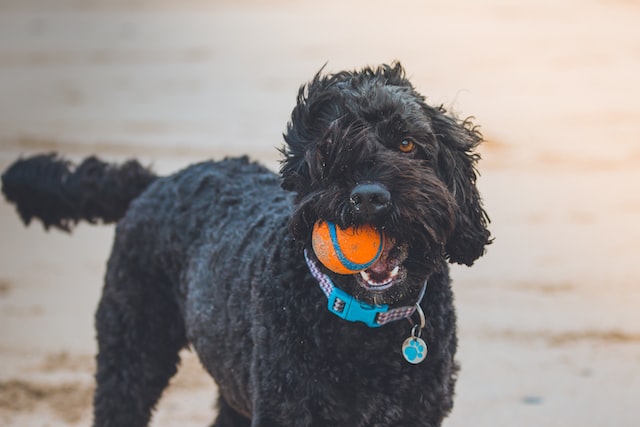
It's important to keep your dog active during the winter months to maintain their overall health and well-being. Exercise helps to keep your dog's muscles strong and their mind stimulated, which can help prevent boredom and behavior issues. Cold weather can make it more challenging to get your dog outside for exercise, but there are still plenty of ways to keep your dog active during the winter.
Consider taking your dog for walks on a leash, playing indoor games such as fetch or hide and seek, or enrolling them in a dog sport such as agility or obedience training. Keeping your dog active during the winter can help them stay healthy and happy, so make sure to incorporate plenty of exercise and mental stimulation into their daily routine.
RELATED: 5 Fun Christmas Activities Your Dog Will Love
6. Limit Time Outside
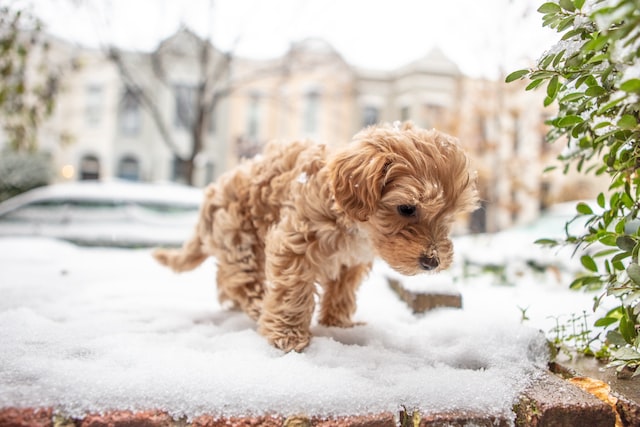
Dogs can get cold quickly, so limit the amount of time they spend outside in cold weather. If you do take them outside, make sure they are properly dressed for the weather and bring them back inside as soon as they start to show signs of being cold.
You can opt for shorter, more frequent walks instead of one or two long walks. This way, your dog will get all the exercise he needs without the risks that come with spending a lot of time in the cold.
RELATED: How Cold is Too Cold for a Pomsky?
7. Be Mindful Of Ice
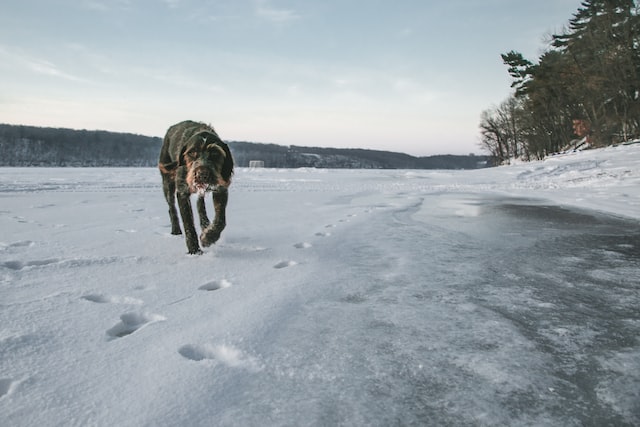
It's important to be aware of the risks associated with thin ice and dogs during the winter months. Dogs may not be able to distinguish between solid ground and a frozen pond or lake, and they may wander onto thin ice and fall through.
To prevent these dangers, it's important to keep a close eye on your dog when they are outside during the winter and make sure they don't venture onto thin ice. If you live near a body of water, consider keeping your dog on a leash to prevent them from wandering too far and potentially falling through thin ice.
By taking these precautions, you can help prevent accidents and ensure that your dog stays safe during the winter months.
8. Watch Their Diet
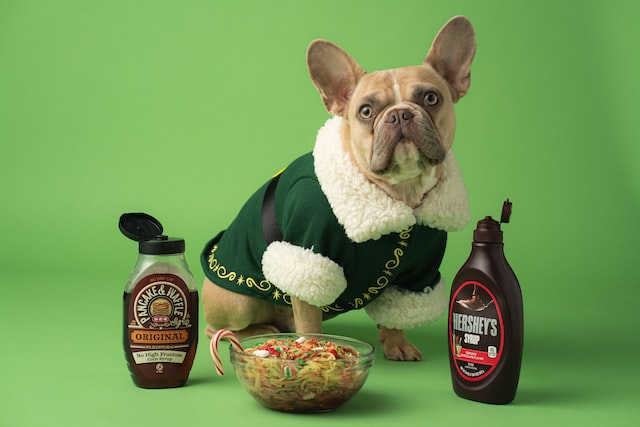
It's important to watch your dog's diet during the winter months to ensure that they are getting the nutrition they need to stay healthy and happy.
Some dogs may have a higher energy requirement in the winter due to increased activity or the need to maintain their body temperature in cold weather. If your dog is more active during the winter or has a thin coat, you may need to increase the amount of food you feed them to ensure they are getting enough energy. It's also important to continue feeding your dog a high-quality diet that meets their nutritional needs. Avoid feeding them table scraps or other unhealthy treats, as these can contribute to weight gain and other health issues.
By monitoring your dog's diet and nutrition during the winter months, you can help ensure that they stay healthy and happy.
RELATED: 10 Human Foods You Should Never Feed Your Dog
9. Groom Them

It's important to continue grooming your dog during the winter months to maintain their overall health and well-being. Grooming helps to keep your dog's coat clean and healthy and can help prevent problems such as tangles, mats, and skin irritations. Grooming also provides an opportunity to check your dog's skin and coat for any signs of health issues, such as dryness, cracking, or parasites.
In addition to the benefits of grooming, regular grooming can also help your dog stay warm during the winter months. A clean, well-groomed coat helps to insulate your dog's body and retain heat, so it's important to continue grooming your dog even during the colder months. If your dog has a long coat, you may need to groom them more frequently during the winter to prevent tangles and mats.
By grooming your dog regularly during the winter months, you can help ensure that they stay healthy, comfortable, and warm.
RELATED: Grooming your Dog at Home Guide
10. Keep Them Safe During The Winter Holidays
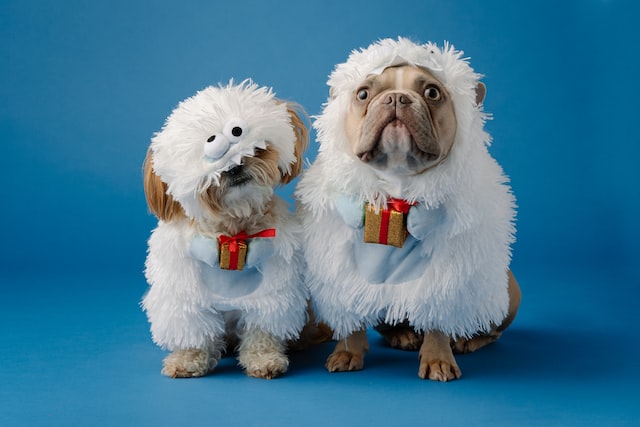
It's important to keep your dog safe during the winter holidays to ensure that they also have a happy and healthy holiday season. Here are some safety precautions to consider when celebrating Christmas and New Year's with your dog:
- Be careful not to feed your dog any holiday treats that may be toxic or unhealthy for them. Chocolate, for example, is toxic to dogs and should be kept out of their reach.
- If your area has fireworks displays during the holidays, keep your dog indoors to reduce the risk of them becoming scared or anxious.
- Keep holiday decorations out of your dog's reach to prevent them from ingesting or becoming tangled in them. Tinsel and other small decorations can be especially dangerous if ingested by a dog.
- Keep an eye on your dog during holiday gatherings to make sure they don't escape or get into any potentially dangerous situations. Keep your dog's identification tags up to date and make sure they are wearing a collar with a current identification tag in case they do get lost.
RELATED: 5 Christmas Safety Tips For Dogs
Conclusion
In conclusion, taking extra precautions to keep your dog safe and comfortable during the winter months is important to ensure their overall health and well-being. From protecting their paws to keeping them active and hydrated, there are many steps you can take to help your dog thrive during the colder months.
By following the tips outlined in this blog, you can help ensure that your dog stays healthy and happy all winter long. Whether it's providing a warm place to sleep, using a dog coat or sweater, or limiting their outdoor time, there are many ways to keep your dog warm and protected during the winter. By taking these precautions, you can help your dog enjoy the winter season to the fullest and make the most of the colder months.
Scroll down to see FAQs about winter care tips for dogs!
What To Read Next
Love in Time for Christmas
Grooming your Dog at Home Guide
Frequently Asked Questions
How cold is too cold for dogs? The specific temperature at which it becomes too cold for dogs can vary depending on several factors, including a dog's breed, size, coat type, and overall health. Some dogs may be able to tolerate colder temperatures more easily than others. As a general rule, it's best to bring your dog inside when the temperature drops below freezing (32°F or 0°C). At these temperatures, your dog may become chilled and may be at risk of developing frostbite, especially on their ears, tail, and paws.
Which dogs need winter coats? Dogs that may benefit from wearing a winter coat include: dogs with short or thin coats, small dogs, older dogs, and dogs with health issues.
Can dogs survive winter outside? It is generally not recommended to leave a dog outside during the winter months, especially for extended periods of time. Cold temperatures can be uncomfortable and potentially dangerous for dogs, especially those with short coats or those that are small.
Which dogs can tolerate cold weather? Some dogs are better equipped to tolerate cold weather due to their breed and coat type. Dogs with thick, double coats and breeds that were originally developed for cold climates, such as huskies and malamutes, may be more able to tolerate cold weather than dogs with thin or single coats. However, even dogs with thick coats may need extra protection in extremely cold weather.



